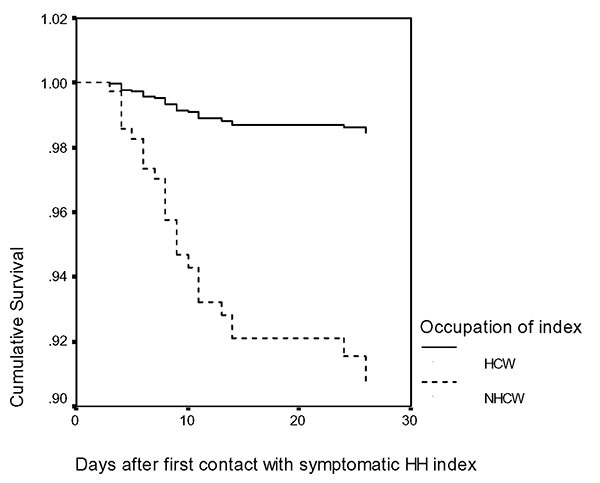Volume 10, Number 2—February 2004
THEME ISSUE
2004 SARS Edition
SARS Transmission
Secondary Household Transmission of SARS, Singapore
Figure

Figure. Survival analysis for secondary household transmission (Cox regression model). Household contacts were more likely to get SARS if the index was older or a nonhealthcare worker. Hazard ratios of risk factors analyzed are tabulated in Table 2. The -2log likelihood for this analysis was 253.77. HH, household; HCW, healthcare worker; NHCW, nonhealthcare worker.
Page created: January 26, 2011
Page updated: January 26, 2011
Page reviewed: January 26, 2011
The conclusions, findings, and opinions expressed by authors contributing to this journal do not necessarily reflect the official position of the U.S. Department of Health and Human Services, the Public Health Service, the Centers for Disease Control and Prevention, or the authors' affiliated institutions. Use of trade names is for identification only and does not imply endorsement by any of the groups named above.